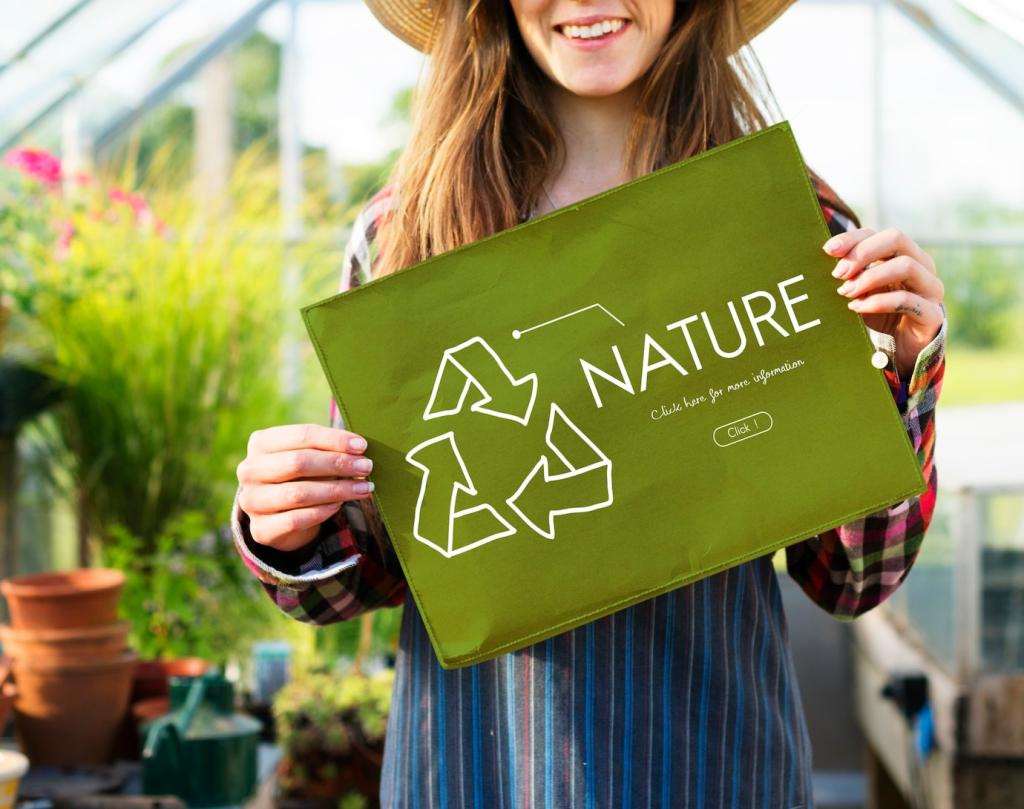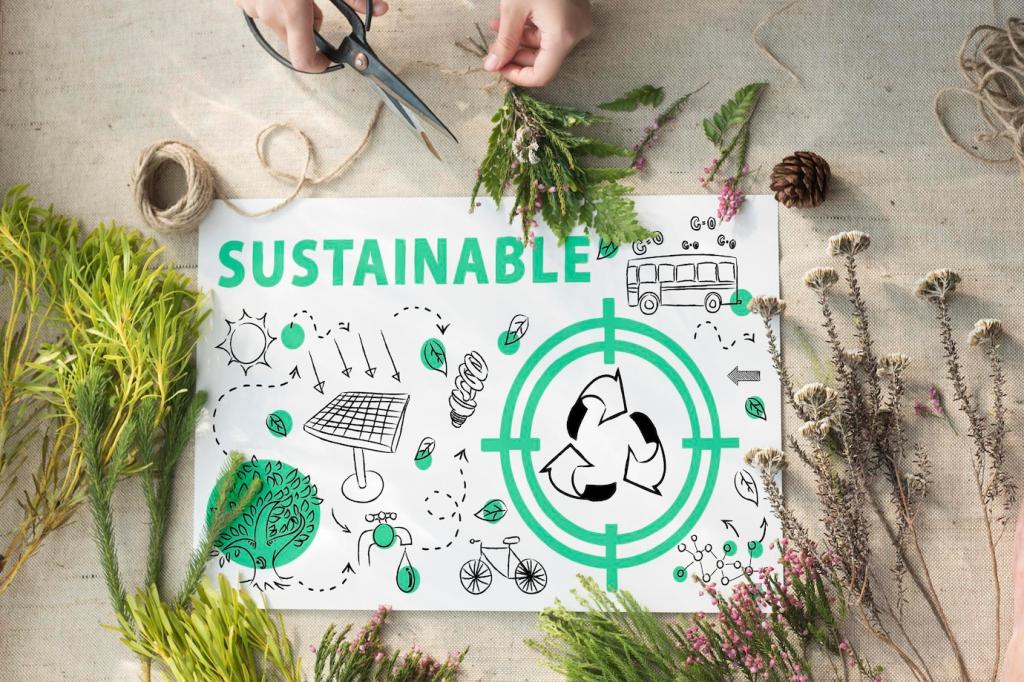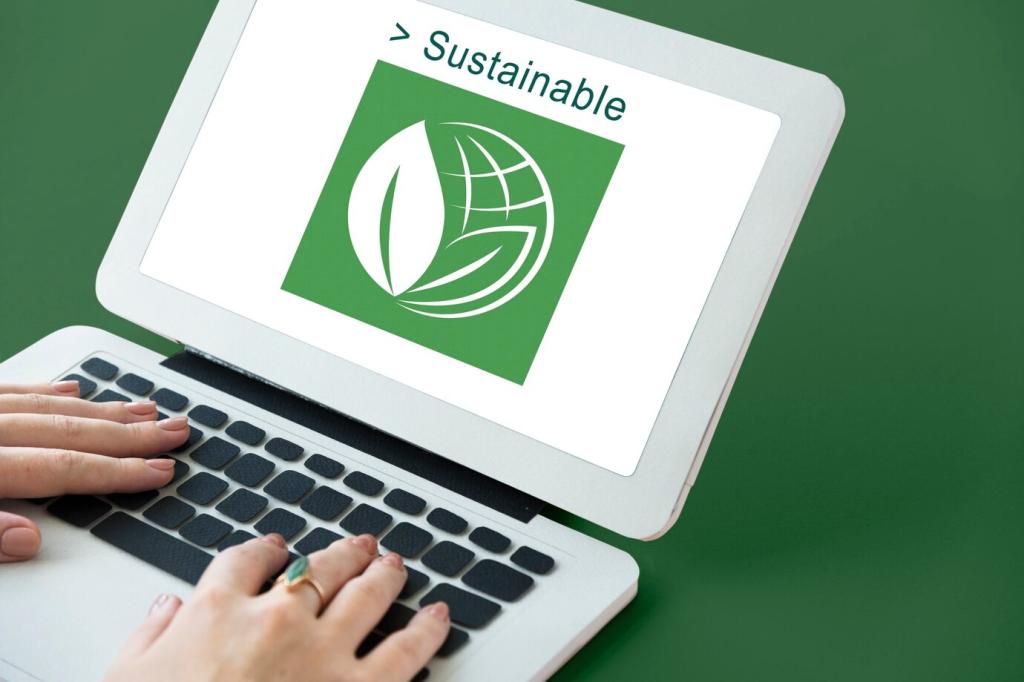
Eco-Conscious Brand Messaging Tips That Earn Trust
Chosen theme: Eco-Conscious Brand Messaging Tips. Welcome to a practical, uplifting guide to communicating sustainability with heart and proof. Explore strategies, real examples, and thoughtful prompts you can apply today. Join the conversation and subscribe for fresh, actionable insights.



Know Your Audience, Speak Their Motivations
Move beyond age and location. Identify mindsets: cost-savers seeking durability, idealists prioritizing ethics, pragmatists wanting convenience. Create message variants for each. When people feel seen, they listen longer, share more, and convert without unnecessary friction.


Tell the moment your team chose the harder, cleaner path—an ocean cleanup, a supplier visit, or a customer letter. Anchor the story in a specific decision and outcome. Invite readers to share their own turning-point moments.

Introduce the people who grow fibers, reclaim plastics, or assemble products. Name regions and processes. Short videos or photo essays humanize your chain and counter skepticism. Ask followers which step of your supply story they want explored next.

Trace one product from sourcing to end-of-life. Show carbon hotspots and improvements made. Offer repair, refill, or take-back options, and spotlight a customer who used them. Stories that close the loop make responsibility feel achievable and repeatable.
Tone of voice: optimistic, precise, humble
Blend hope with accuracy. Use verbs that signal action, not hype. Admit limits and outline plans. Humility builds trust in complex topics where perfection is rare and progress is iterative. Readers appreciate brands that sound like responsible neighbors.
Design cues that support the message, not green clichés
Avoid overused leaves and generic eco icons. Choose typography for readability, colors with strong contrast, and imagery of real processes. If digital, consider low-weight assets that load efficiently—responsible design choices complement your environmental commitments.
Use certifications and data responsibly
Display badges only when current, relevant, and verified. Explain what each standard means in one sentence. Highlight the scope and limitations. Invite subscribers to vote on which certification breakdown they want to see in a future deep-dive post.
Social series that invite participation
Run weekly challenges—repair, refill, or reuse—tagging partners and customers. Share metrics of collective impact to motivate momentum. Feature thoughtful comments, not just polished photos. Consistency turns small actions into community rituals people anticipate.
Email and newsletters with repeatable rituals
Create predictable sections: “One measurable win,” “One honest obstacle,” and “One action to try.” Keep subject lines clear and benefit-led. Ask subscribers to reply with questions, then publish answers, crediting contributors to honor their curiosity and time.
UGC and ambassador spotlights with real guidelines
Encourage user stories with clear prompts and do’s and don’ts. Provide a simple brief, usage rights, and values alignment checklist. Recognize contributors meaningfully—features, donations in their name, or early access—to foster genuine advocacy over performative posts.
Measure, Learn, and Iterate
Pick outcome-based metrics
Look beyond impressions. Track repair program adoption, refill return rates, repeat purchase tied to verified eco claims, and trust indicators from surveys. Align metrics to business goals so sustainability messaging proves both impact and commercial value.
A/B test frames and calls to action
Experiment with framing—cost savings, durability, or community impact—and compare downstream behavior, not just clicks. Test CTAs for clarity and effort required. Share surprising results publicly to help others learn and to strengthen your credibility.
Close the loop with listening
Use social listening, customer interviews, and post-purchase surveys to find misconceptions. Publish a “You asked, we changed” note quarterly. When audiences see their feedback reflected, they participate more and recommend your brand to like-minded friends.
Own Mistakes and Show Progress
When targets slip, communicate early
Explain what happened, what you learned, and how you’ll adjust. Offer a revised timeline and interim actions customers can see. Early honesty preserves trust and turns a stumble into a case study for continuous improvement.
Respond to criticism constructively
Acknowledge concerns, avoid defensiveness, and invite dialogue in a moderated forum. Share specific next steps and report back on progress. Constructive responses transform critics into collaborators and demonstrate your commitment to accountability beyond marketing.
Publish a credible roadmap with milestones
Provide a dated plan with owners, dependencies, and interim checkpoints. Note uncertainties and how you’ll validate assumptions. Invite subscribers to track progress via a public dashboard, and celebrate milestones with partners and customers who made them possible.

